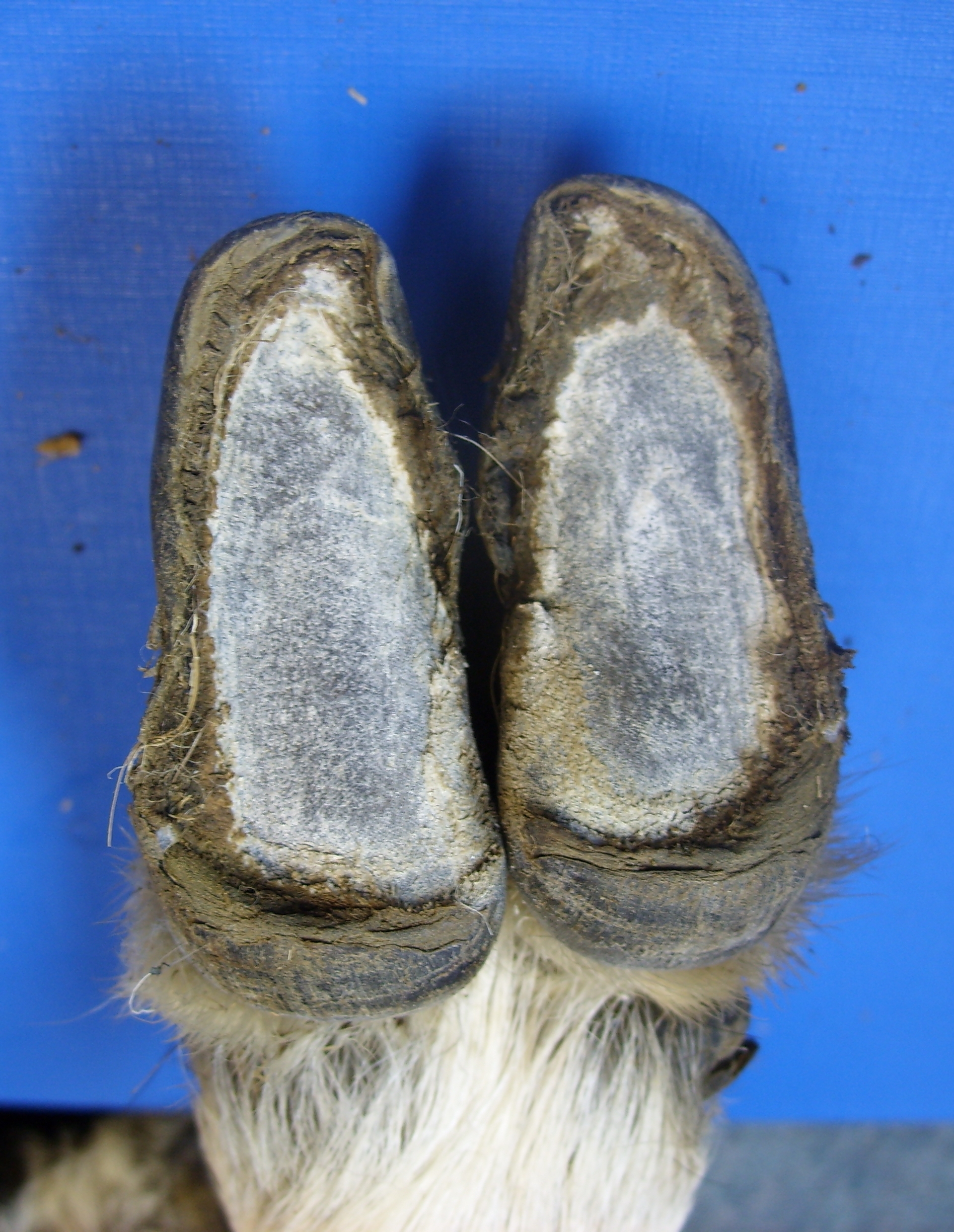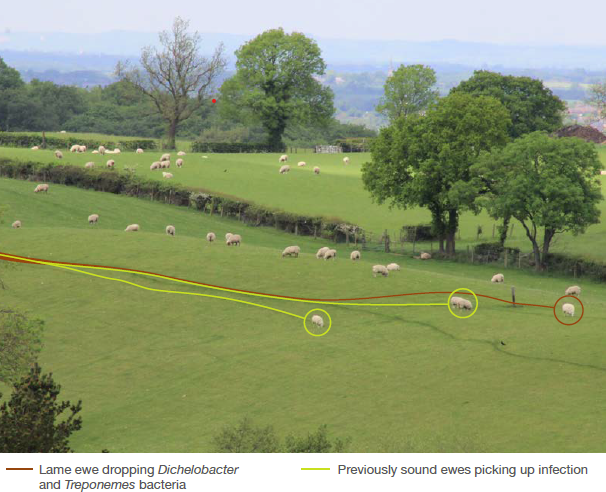- Home
- Knowledge library
- The anatomy of a healthy sheep’s foot
The anatomy of a healthy sheep’s foot
Understanding what a healthy foot looks like is the first step to keeping lameness levels low. You’ll find advice on reducing the spread of bacteria on your farm.
Back to: Reducing lameness in sheep
What does a healthy foot look like?
A normal foot has a hard wall of horn around two toes, each with a softer sole horn at the base. In healthy sheep:
- The interdigital skin between the toes is pale pink and dry, with a layer of fine hairs
- The sole horn is only 2–3 mm thick and is easily damaged by thorns or other sharp objects
- The wall horn bears the sheep’s weight, so a normal foot has wall horn that is usually proud of the sole Sometimes the wall horn curls over the sole horn.
Although this may not cause the sheep harm, it became common practice to trim this horn away. About 50% of farmers who were trimming have stopped this practice and as a result, have seen fewer lame sheep.
Think ‘foot check’ rather than ‘foot trim’
Research has shown that it is detrimental to trim feet of lame sheep with footrot or scald because it delays healing and increases the risk of the disease returning. Trimming equipment can carry infectious bacteria, which could spread disease in your flock. Trimming may be needed where the hoof horn is deformed, but these sheep should be culled as soon as possible because they are likely to become lame again.

Think ‘foot check’ rather than ‘foot trim’
Research has shown that it is detrimental to trim feet of lame sheep with footrot or scald because it delays healing and increases the risk of the disease returning.
Trimming equipment can carry infectious bacteria, which could spread disease in your flock. Trimming may be needed where the hoof horn is deformed, but these sheep should be culled as soon as possible because they are likely to become lame again.
Keep trimming to a minimum
If a diagnosis cannot be made without trimming, keep it to a minimum. Wall horn grows at the rate of about 5 mm per month and the length of sheep feet varies naturally over the seasons. During the course of a year, growth often matches wear, so trimming is not necessary.
In a healthy foot, the horn of both sole and wall is intact without smell, heat, softness, or separated horn. If a sheep is not lame and its feet look reasonable, leave well alone.
Reducing on-farm bacteria
To avoid spread on farm:
- Consider high traffic areas; for example, gateways and troughs, where bacteria can spread
- Consider handling facilities, equipment and hand-washing – you can transfer bacteria from one foot to another when inspecting sheep
Every lame sheep is a primary source of infection. Isolate and promptly treat clinical cases. Cull persistently infected sheep.
There are six main causes of lameness in the GB sheep flock. Effective management of lameness depends on correct identification.
The main causes are:


